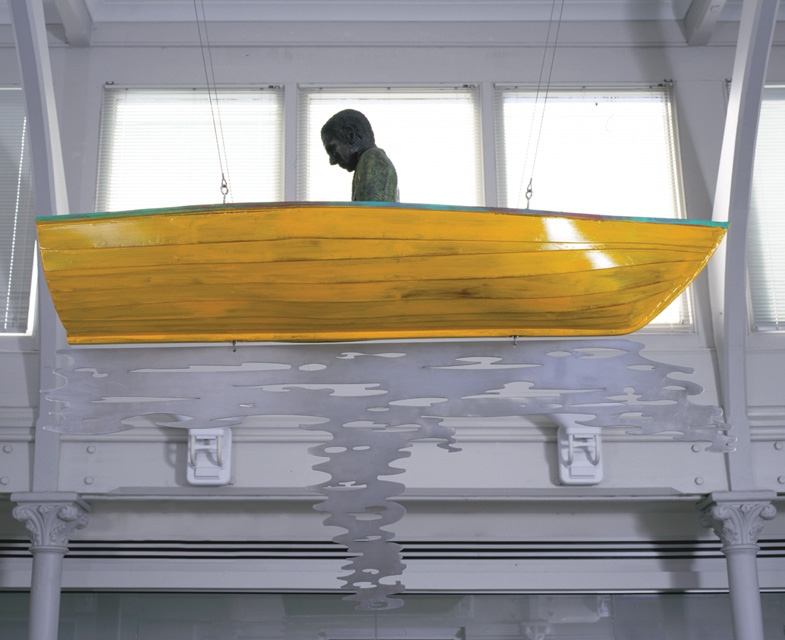


'She dug a hole in the bottom of my soul,' sang Johnny Cash in his 1996 cover version of Beck's Rowboat. Is the solitary figure in Tim Jones's Boat (1992) contemplating similar heartbreak? It scarcely matters; he may just as well be reading Thomas Hardy. What Jones captures is the essence of solitary thought, a sense of mystery and illusion.
The reflection of the artist ripples out towards the viewer in a lake of cast iron. He is either blissfully alone or cursed to become Charon; doomed to ferry the dead across Acheron, one of the five rivers of Hades. Boat floats on waters of ambiguity.
Mystery inhabits all of Tim Jones's works. The artist hails from the eerie, almost untouched mountains and woodlands of Celtic Wales. The dark hollows and ragged mountains of his homeland, infused with mythology, have led to an aesthetic of potential drama and foreboding. In drawings, wood engravings, paintings and sculptures, Jones has explored the Gothic memories of childhood in a mysterious land informed equally by reality and fiction.
For Jones, the actual technical execution of a work of art is paramount—one can be sure that his boat would not leak. As Frances Lindsay has noted, 'the Gothic wooden churches of Wales, the weatherboard houses of the New England region in America, and the humble country cottages of Australia have all contributed to his fascination with timber constructions'.1
In more recent works the artist has moved on to utilise aluminium and bronze, but rendered in such a way as to emulate the somewhat haphazard qualities of nailed timber. 'Essentially, for a piece of art to be good, to grab the attention of the viewer, it has to have impact,' he has said. 'One way I know of making impact is to create a form that alludes to almost pushing itself out of the earth, like a fist coming out of the water with a great potency and strength behind it.'2
Boat certainly achieves Jones’s desire. The sculpture is part of a series the artist has dubbed 'levitating phenomenon'.3 Its literal source comes from the riverbank of the Hudson River in Connecticut; however, the unearthly hovering aspect of Boat comes from the strange phenomena of such natural formations as Hanging Rock in Victoria, which evokes in the visitor a sense of the otherworldly.
'What I am looking for, I suppose, is a universal subconscious,' Jones has said.4 His work tackles the iconography of mythology. Is the boatman Charon or is he Arthur about to be granted Excalibur? Or is it even more simple: just the artist finding a moment of contemplation and peace on the gently meandering water? There is an old-fashioned and romantic lyricism and poetry to Jones's works, just as there is a physical solidity to his structures. But one might notice a key component missing in Boat. There are no oars; the boatman is adrift and rudderless, at the mercy of his floating dreams.
- Ashley Crawford
Tim Jones is represented in Australia by Australian Galleries, Melbourne and Sydney.